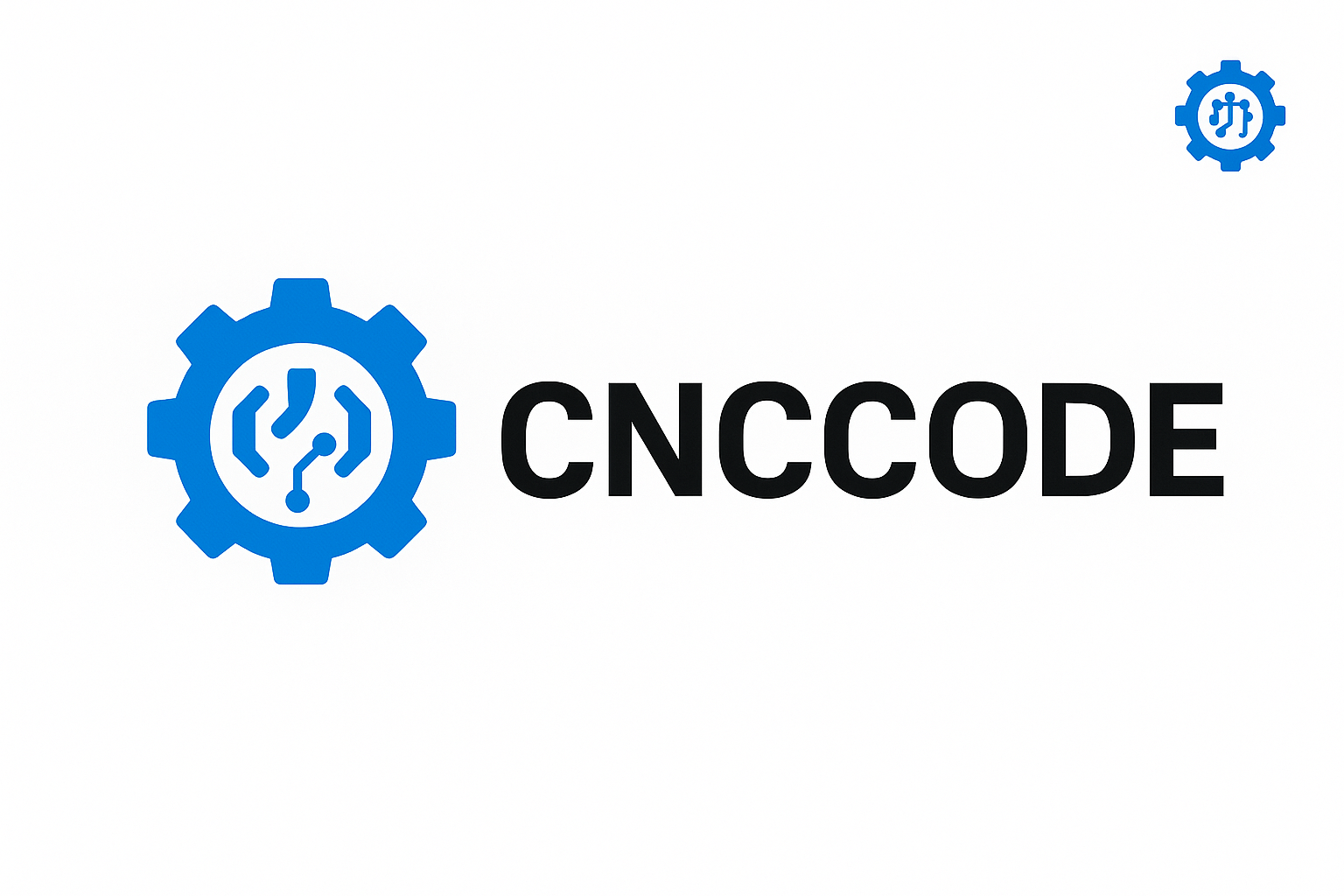Executive Summary
Welcome to cnccode.com’s living CNC Encyclopedia—a single, copy-and-paste ready article covering every major facet of modern CNC machining. From smart factory integration and AI-driven quality control to digital twins, hybrid additive-subtractive workflows, magnetic linear drives, and edge-AI closed-loop control, this guide delivers the latest breakthroughs, real G-code examples, pro macros, and strategic insights. Bookmark this page; it’s your definitive resource and will be updated continuously.
Table of Contents
- Smart Factories & Industrial IoT
- AI-Driven Quality Control & Predictive Maintenance
- Digital Twins & Virtual Commissioning
- Hybrid Additive-Subtractive Machining
- Magnetic Linear Drives & Next-Gen Motion
- Edge-AI & Closed-Loop Control
- 5-Axis & Multi-Task Machining Strategies
- Sustainability & Green CNC Practices
- Pro-Level G-Code Snippets & Macros
- Future Trends & Skills Roadmap
1. Smart Factories & Industrial IoT
Modern CNC operations harness an Industrial Internet of Things (IIoT) backbone to interconnect machines, sensors, and software in real time. Spindle vibration, temperature, and load sensors feed into a central Manufacturing Execution System (MES), enabling dynamic job scheduling, automated OEE tracking, and data-driven decision making. Robotic part loaders, automatic pallet changers, and in-process vision inspection further automate production, boosting throughput and cutting waste.
2. AI-Driven Quality Control & Predictive Maintenance
Artificial Intelligence models analyze historical machine data—acoustic signatures, spindle currents, bearing temperatures—to forecast tool wear and impending failures. In-line vision systems inspect surface finish and dimensional accuracy, automatically rejecting out-of-tolerance parts. By adopting AI-powered maintenance, shops extend spindle life by 50 percent, reduce scrap rates by over 40 percent, and achieve near-zero unplanned downtime.
3. Digital Twins & Virtual Commissioning
Digital twins are live virtual replicas of your CNC machines and entire production lines. Feeding real sensor data into a physics-based simulation allows collision detection, optimal fixture layout, and cycle-time tuning before cutting any metal. Virtual training in AR/VR environments ensures operators are fully versed in new setups. Implementing digital twins cuts first-part error rates by up to 80 percent and accelerates ramp-up on new programs.
4. Hybrid Additive-Subtractive Machining
Hybrid CNC platforms combine additive processes (laser cladding, direct-energy deposition, or powder-bed fusion) with high-precision 5-axis milling in a single machine. Typical workflow: build a near-net shape layer by layer, then mill critical surfaces and features to micron tolerances. Benefits include material savings of 60 percent, single-setup accuracy, and rapid repair of high-value components like turbine blades—all within one machine.
5. Magnetic Linear Drives & Next-Gen Motion
Magnetic linear drive systems employ levitated stages propelled by controlled magnetic fields instead of traditional ball screws. Key advantages: sub-micron positioning accuracy, speeds exceeding 50 m/min, and elimination of lubrication or backlash. Ideal for ultra-precision industries—semiconductors, optics, and photonics—magnetic drives represent the next leap in motion control.
6. Edge-AI & Closed-Loop Control
Embedding AI inference directly on the CNC controller (edge-AI) enables real-time adjustment of feed rates and spindle speeds based on live feedback (cutting forces, vibrations, acoustic signals). This closed-loop approach yields up to 20 percent faster cycle times, 25 percent longer tool life, and consistent surface finishes even as conditions shift. Edge-AI bridges the gap between theoretical CAM settings and real-world machining dynamics.
7. 5-Axis & Multi-Task Machining Strategies
Advanced 5-axis techniques—tilt-rotate tables and simultaneous contouring—allow complex features (impellers, turbine blades, medical implants) to be machined in a single setup, eliminating multiple part-reorientations. Multi-tasking centers add live tooling and Y-axes to lathes, enabling turning, milling, drilling, and tapping without reclamping. Combining trochoidal roughing with dynamic tool-tilt strategies maximizes material removal rates while controlling tool engagement forces.
8. Sustainability & Green CNC Practices
Eco-conscious shops adopt cryogenic cooling (liquid nitrogen) to replace oily flood coolants, implement on-site metal chip recycling systems, and utilize regenerative drives that return braking energy to the power grid. These green initiatives reduce environmental impact, lower operating costs, and often qualify for sustainability incentives. CNC sustainability is now a critical differentiator in global manufacturing.
9. Pro-Level G-Code Snippets & Macros
9.1 Adaptive Trochoidal Roughing Macro
gcodeO1001 (Trochoidal Roughing Macro)
#100 = 0.5 (Radial step in mm)
#101 = 2.0 (Axial depth per pass in mm)
G65 P2000 Q[#100] R[#101]
M98 P3000 (Call subprogram)
M30
O3000 (Trochoid Sub)
#1 = #1
#2 = #2
WHILE [#2 GT 0] DO1
G01 X[#1] Y0 Z[#2] F800
G03 I[-#1] J0 F800
#2 = [#2 - #101]
END1
M99
9.2 Real-Time Tool Wear Compensation
gcodeO2001 (Tool Wear Compensation)
#300 = 0.02 (Nominal wear offset)
#301 = #5065 - #5040 (Measured probe difference)
IF [#301 GT #300] THEN
#300 = #301
G43.1 Z[#300] (Apply global wear offset)
ENDIF
M99
Copy and paste these directly into your CNC controller to implement advanced strategies instantly.
10. Future Trends & Skills Roadmap
To stay at the forefront, CNC professionals must master:
- Digital twin development & AR/VR simulation
- Edge-AI model training for real-time process control
- Hybrid additive/subtractive workflow planning
- Green machining technologies (cryogenics, chip recycling)
- Magnetic drive system integration for ultra-precision
Start shaping your CNC future today—only on cnccode.com. Bookmark this page, explore our tutorials, and engage with our community Q&A to keep your skills and shop ahead of the curve.

Leave a comment